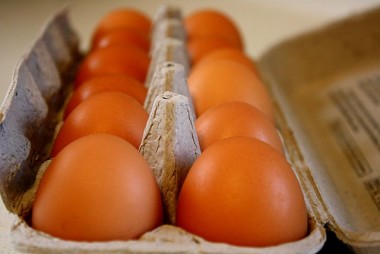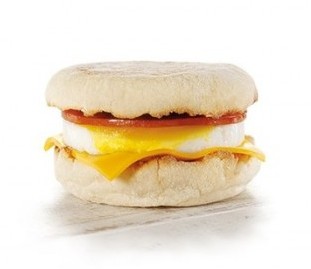
Egg farmers begin huge shift to cage-free production as industry pressure mounts
by Canadian Manufacturing.com Staff, with files from The Canadian Press

Restaurants, consumers are demanding free-run eggs, yet nine of 10 Canadian farms still use conventional caged housing

The shift will transition half of Canadian farms to cage-free enclosures within eight years, and 85 per cent within 15.
OTTAWA—There’s upheaval at the Canadian egg farm.
In 20 years, amid pressure from restaurants and consumers across North America, the close-quarter battery cages that have dominated egg production should be gone and the traditional laying farm may be largely unrecognizable.
Earlier this week, high profile food chains Tim Hortons and Burger King announced they would would switch to cage-free egg sources by 2025, joining McDonald’s Canada, which made the 120-million-egg decision last September. Today, Cara Foods, the company that owns Harvey’s, Swiss Chalet, Kelsey’s and East Side Mario’s joined the call, committing to cage-free eggs across its entire supply chain by 2020.
Despite the furor of excitement, today approximately 90 per cent of Canada’s farms produce their eggs using conventional housing, while only 10 per cent use enriched, free-run, aviary or free-range housing.
As a result of the overwhelming call for improved living conditions for laying hens, Eggs Farmers of Canada is undertaking an enormous shift away from traditional battery cages.
“In response to the best available scientific research and in light of changing consumer preferences, I’m pleased that the entire industry has agreed to an orderly transition plan that will further diversify our production practices,” Peter Clarke, chairman of Egg Farmers of Canada, said. “We see immense potential to leverage research and innovation to achieve the best possible outcomes across all factors of sustainable food production, which includes everything from environmental impacts to food affordability.”

To make its iconic McMuffin and other products, McDonald’s Canada currently buys approximately 120 million eggs from Canadian suppliers each year. PHOTO: McDonald’s
With more than 1,000 egg farms across the country housing an average of between 10,000 and 20,000 hens—and some with as many as 400,000—the shift will require a monumental effort. Egg Farmers says the coordinated transition will take hen welfare, human health, environmental impact and food production sustainability all into account.
The egg industry organization plans to restructure its housing methods to reach 50 per cent cage-free production within eight years. Farmers will then achieve 85 per cent cage-free production within 15 years. If all goes according to plan and market conditions persist, all hens will nest in enriched, free-run, aviary or free-range housing by 2036.
As the shift gets underway, animal activists continue to press for the most extreme housing scenario—free-range—while Egg Farmers says it hopes to continue to discuss housing with stakeholders and consumers. The organization touts the benefits of enriched housing, which it says are not well understood outside the industry. Pointing to the Coalition for Sustainable Egg Supply’s four-year, commercial-scale study, the industry group said while one production method may possess strong positives for hen welfare, the impact on human health, the environment, and the economy are all important factors that should not be overlooked.
“Egg Farmers of Canada is committed to research, both around production practices and consumer preferences, and to ensuring evidence-based decision-making when it comes to industry practices,” Mr. Clarke concluded.
An in-depth look at how eggs are sourced in Canada:
Battery Cages:
The wire-floor cages house about four to seven hens, said Debra Probert, the Vancouver Humane Society’s executive director. They give each chicken the living space of about a standard piece of paper measuring 8.5 inches by 11 inches.
Probert estimated 95 per cent of Canada’s egg producers operate use battery cages.
Battery cages are “more convenient for the farmer than it is, obviously, for the hens,” she said.
Enriched cages:
These cages are larger, housing dozens of hens, said Tina Widowski, an animal and poultry science professor at the University of Guelph who holds the research chair in poultry welfare at Egg Farmers of Canada. The cages provide perches and somewhat private nesting areas.
She said enriched cages give chickens more space, allowing them to exhibit natural behaviours like dust bathing, perching and laying eggs in private.
Clarke said he prefers this type of hen housing because it also protects the health of farmers, as it exposes them to less dust and ammonia.
A&W, a notable standout from its competitors, has committed to source all its eggs from hens in enriched cages by the close of the year, much to the dismay of animal rights groups pushing for a cage-free industry.
Cafe-Free/Free run:
Farmers are under growing pressure to shift to this type of housing as more companies promise to provide eggs from hens that don’t live in cages. But that doesn’t necessarily mean that hens will suddenly be meandering outside as they please.
“We’re not saying that definitely that cage-free is cruelty-free,” Probert said. “It’s not.”
Cage-free hens may live in a free-run system, housed in an aviary in a barn without access to the outside world, she said.
Clarke and Widowski say cage-free living conditions have some trade-offs. They can poorly impact chicken and farmer health by exposing them to irritants like dust and can cost more to operate.
Cage-free/Free-range:
The other option—what Probert calls “the ideal”—is free-range hens, which are allowed to roam outside. All certified organic eggs in Canada must come from free-range hens.
It’s unclear which cage-free option Tim Hortons, Burger King and other restaurants making such public declarations will source their eggs from. Cage-free never means chickens will go outside, said Widowski, unless they’re producing free-range or certified organic eggs.
Still, Probert calls the incremental change to move hens out of cages a positive step.
“Once they’re out of cages, that makes a huge difference.